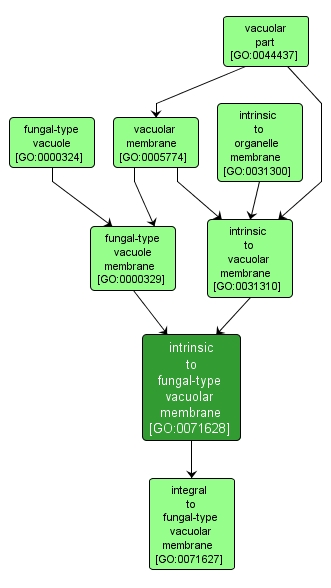GO TERM SUMMARY
|
| Name: |
intrinsic to fungal-type vacuolar membrane |
| Acc: |
GO:0071628 |
| Aspect: |
Cellular Component |
| Desc: |
Located in the fungal-type vacuolar membrane such that some covalently attached portion of the gene product, for example part of a peptide sequence or some other covalently attached moiety such as a GPI anchor, spans or is embedded in one or both leaflets of the membrane. |
|

|
INTERACTIVE GO GRAPH
|














